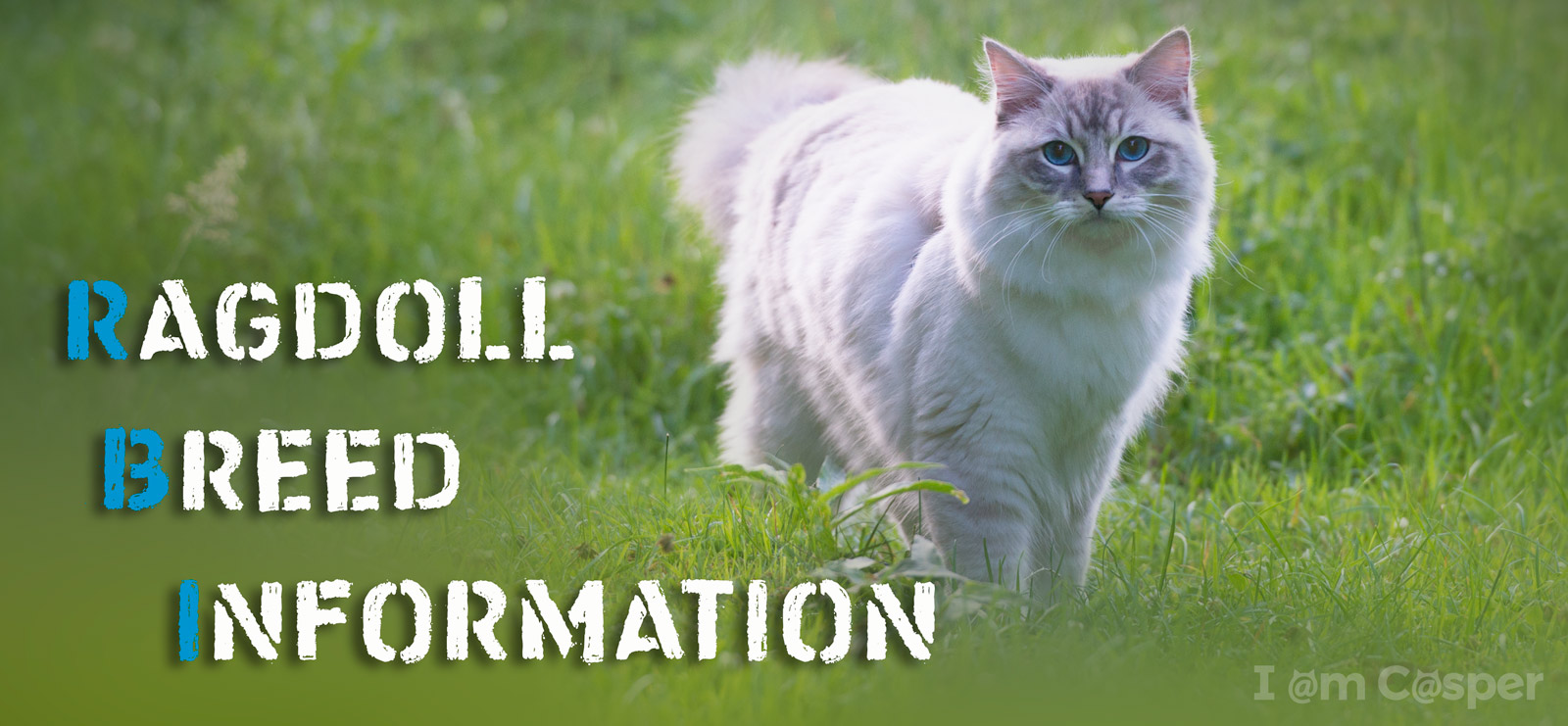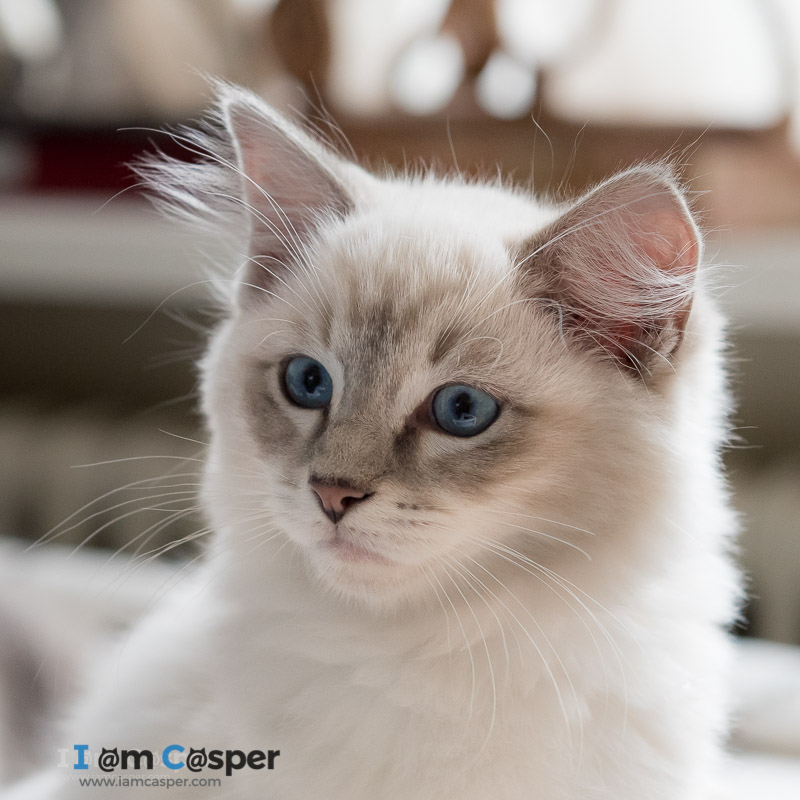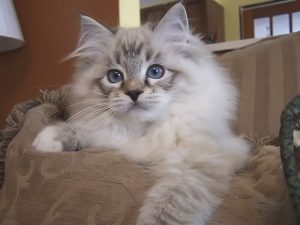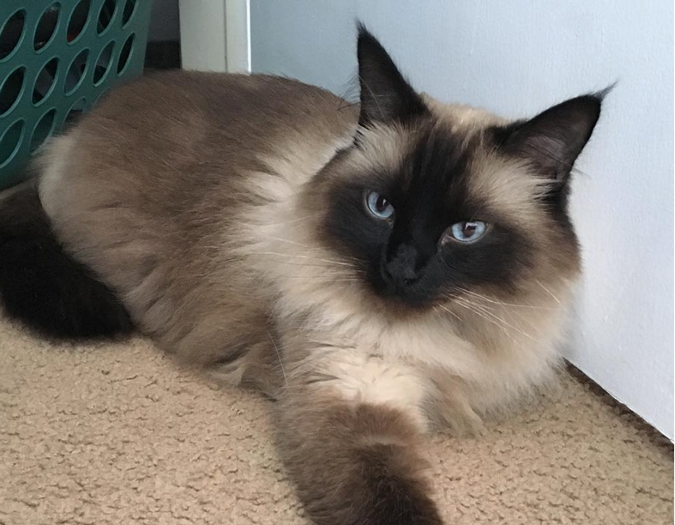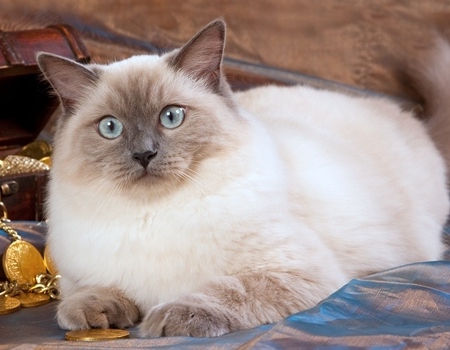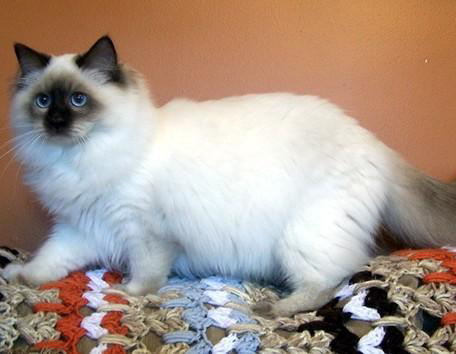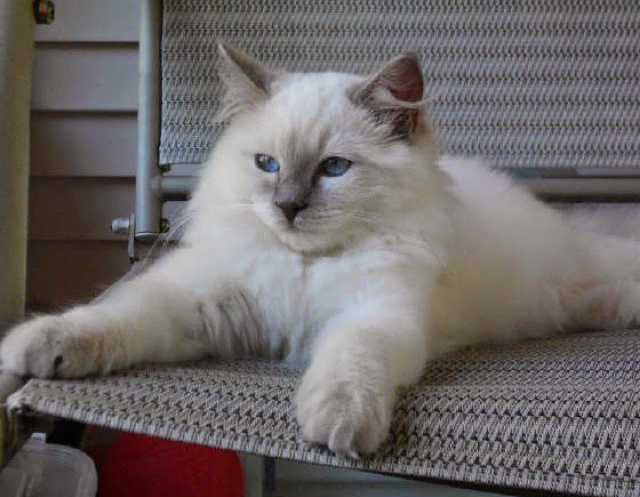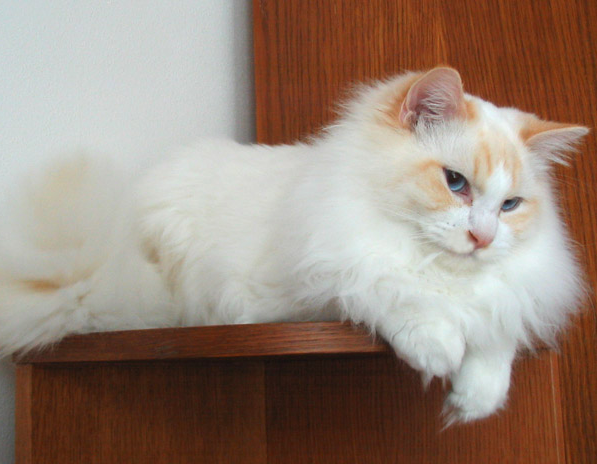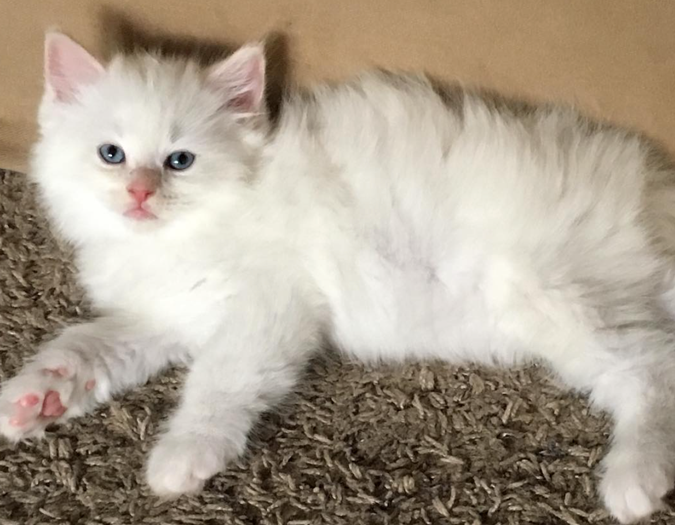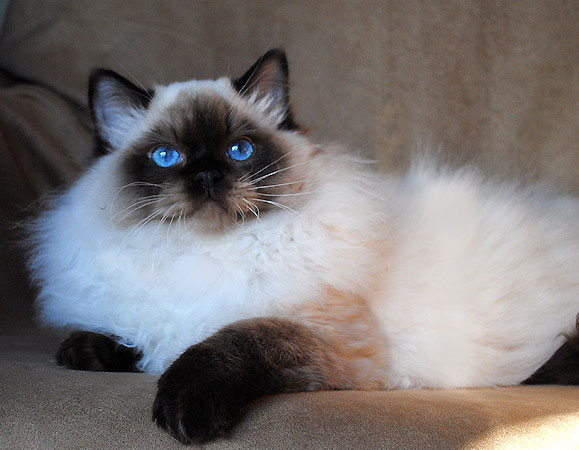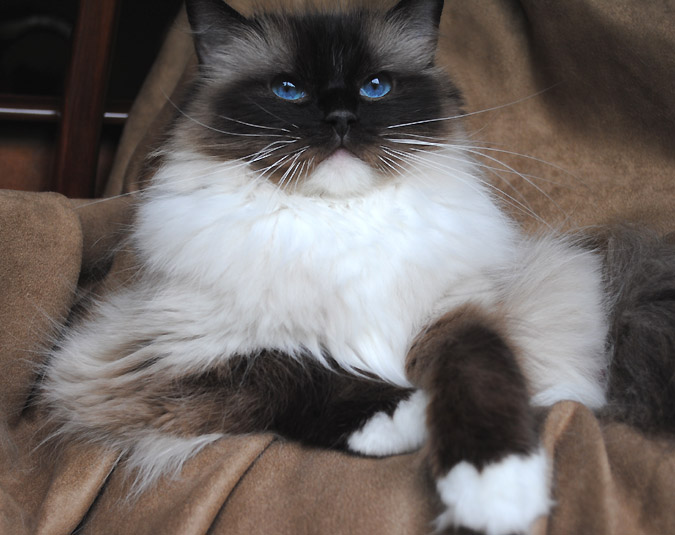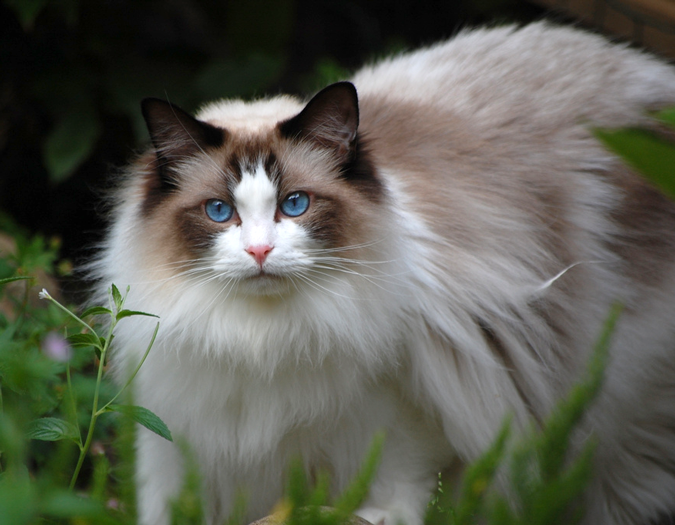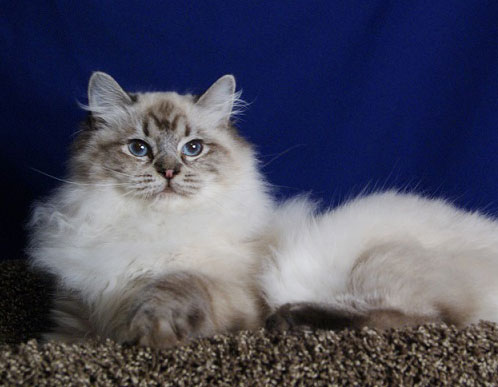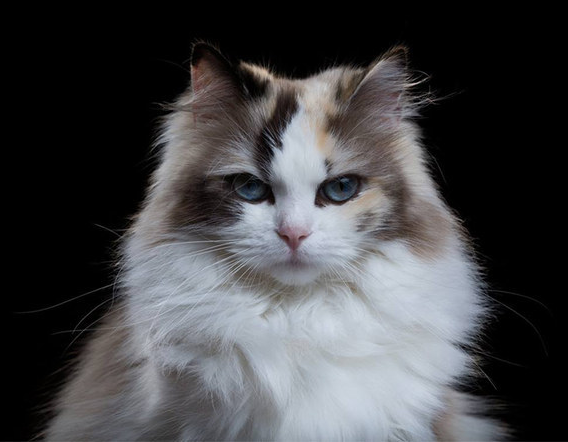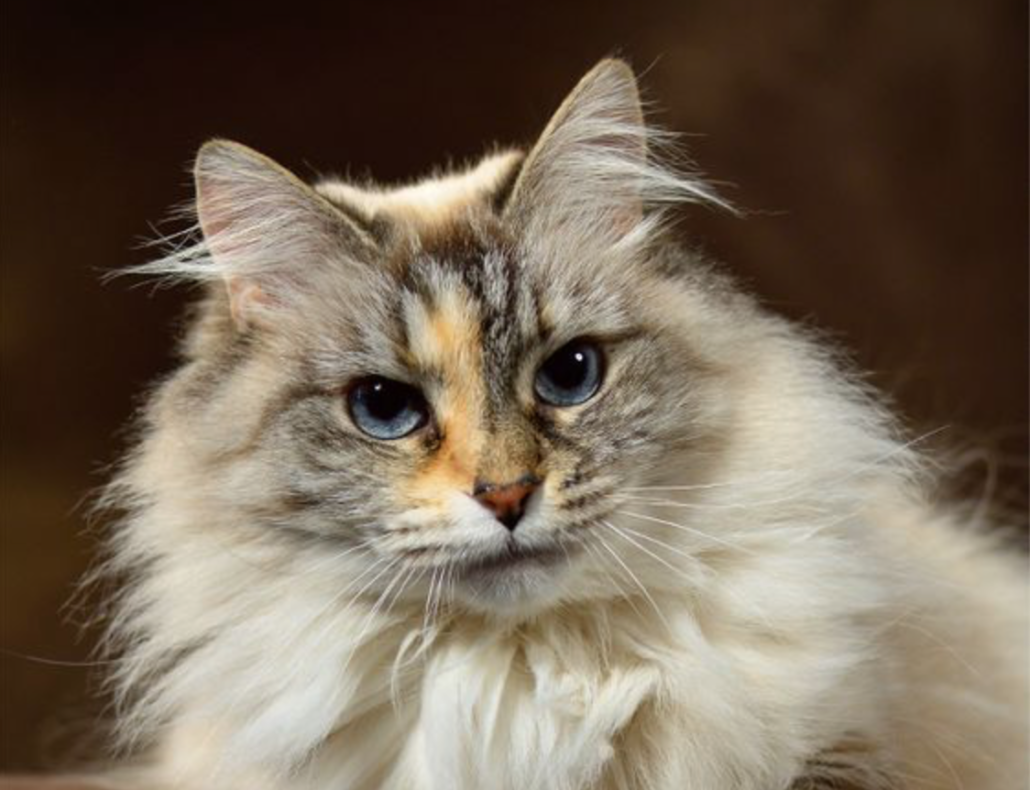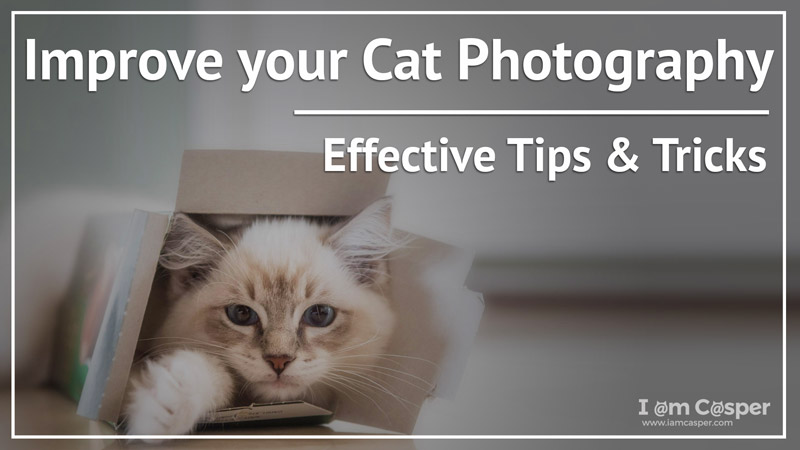INFORMATION ABOUT RAGDOLL CATS
INTRODUCTION
When Casper, our ragdoll, joined our family in September 2016, the owner of the cattery told us he was a male seal mitted lynx Ragdoll. During our first visit to the cattery, I experienced how hard it was to tell him apart from his brothers and sisters. They were all so fluffy and cute. On our way home, I realized how little I knew about cats in general and ragdolls in particular. So in order to be prepared and well informed about this lovely cat breed (and our new family member), some reading and research was necessary.
This is Casper – a Seal Point Lynx Mitted Male Ragdoll born on 29th June 2016.
This Ragdoll information page is a thorough summary of all the information I found so far and which I think is interesting for every ragdoll lover. I hope it will help you learn more about ragdolls and that it will be useful for you like writing it was for me. I will be updating these pages regularly as my research continues.
Do you want to see great videos about Ragdolls? Lots of videos about our two Ragdolls Casper and Binx on our Youtube Channel. Click link or on picture below.
What is a Ragdoll ?
Ragdoll cats are mostly known for their large size, their bright sparkling blue eyes, a semi-long silky rabbit-like fur, and a docile and people loving personality. They say Ragdoll cats act more like dogs than cats.
Ragdolls are so easy going and affectionate, they tend to follow you around the house all the time and they act like they have been friends with everybody for years. They greet you when you come home, they can easily be voice trained and they love to be close to people or their family members.
While some breeds can be traced back hundreds or thousands of years, Ragdoll cats only date back to the early 1960s. Ragdoll cats acquired their name because, when held, they go limp and become completely relaxed and floppy, like a feline ragdoll.
Still interested? Keep reading then, lots of interesting info to come, but first this:
A gorgeous Seal Lynx Point Mitted Ragdoll kitten
SOME HISTORY OR MYTH
The exact history of the origin of Ragdolls remains uncertain. Much has already been written about the history of Ragdolls and some debate and mystery still surround the beginnings of the breed, to say the least. The myth goes like this:
Back in the early 1960’s, a pregnant white cat called Josephine was injured in an accident involving a car. Josephine was a Persian or Angora type of cat and had litters sired by several unknown male Birman cats, one of which had the Siamese point coloration.
After Josephine recovered from her injuries, she produced kittens that were so relaxed and more trusting than any other had seen before. People linked this easygoing temperament to the car accident, but none of these claims has been found to have any basis in fact.
When the subsequent litter produced more of the same, Ann Baker, a close neighbor, believing it was something special, purchased several kittens from the owner, and set out to create what is now known as the Ragdoll.
Despite the car myth, it is a fact that it was Ann Baker who started the breeding program in Riverside, California in 1963. The breed was selectively bred over many years for desirable traits, such as their wonderful temperaments, beautiful coats, gorgeous blue eyes and the striking pointed coloration.
The first Ragdoll left the States in 1981 and eleven years later the first Ragdoll (bi-color) of the breed was officially accepted by the Fife (Federation Internationale Feline), soon followed by the colorpoint version in 1997 and the mitted in 1999.
In fact, the name Ragdoll was given by the original breeder Ann Baker in the 1960’s and was so named for its captivating tendency to go limp like a child’s toy when held in human arms.
PHYSICAL CHARACTERISTICS
Colours
The colours and patterns of ragdolls seem confusing in the beginning but once you get the hang of it, it is pretty easy to understand.
Ragdolls are born white and the color comes in slowly….although you can tell seal and blue anywhere from a few days to a week… you can’t determine chocolate and lilac for 3-4 weeks. They have very good color by 8-12 weeks but they don’t get their full color for about 2 years.
There are SIX basic colours for ragdolls : Seal, Blue, Chocolate, Lilac, Red and Cream.
Some of these colours are a diluted form of another colour, let’s take a look at them one by one:
Seal – Seal is a dark brown colour that is almost black. A seal ragdoll has deep dark brown colouring on the points. The body colour can vary from an even smoky light to medium brown, that gets darker with age. There may be some gradually shading into a lighter colour on the belly and chest.
Blue – Blue, a diluted form of seal, is a dark bluish grey colour. A blue ragdoll has grey-bluish colouring on the points. The body colour is a lighter platinum, bluish grey tone, shading gradually to an even more light tone toward the stomach and the chest. Paw pads and nose leather has a dark blue-grey tone.
Chocolate – Chocolate is a dark chocolate brown colour. A chocolate ragdoll has dark brown (like milk chocolate) colouring on points but the body coat will keep its ivory white colour, shading, if at all, towards the color of the points. Paw pads have a salmon pink colour and the nose leather has a burnt rose tone.
Lilac – Lilac, a diluted form of Chocolate, is a lighter shade of blue grey colour with a slight pinkish tinge. A lilac ragdoll has lilac grey or pinkish colouring in the points. It seems like the dilute pigment permits the flesh tone to show through. The body colour of the lilac ragdoll is an even milk white colour shading, if any, towards the color of the points. The paw pads have a coral pink tone and the nose leather has a translucent old lilac hue.
Red (aka Flame) – Red is the red colour you may have seen with most reddish cats (apricot colour). A red ragdoll has a deep orange red colouring of the points. The body colour of the red ragdoll is a warm, even, creamy white colour, shading, if any, towards the same tone as points. Paw pads and the nose leather have a hot pink tone.
Cream – Cream, a diluted form of red, is a noticeable lighter shade of red. A cream ragdoll has a cream (deep to pale cream) colouring of the points. The body colour of the cream ragdoll is an even white colour all over, shading, if any, towards the same colour of the points. The paw pads and the nose leather have a rosy pink tone.
Colour SEAL Ragdoll
Colour BLUE Ragdoll
Colour CHOCOLATE Ragdoll
Colour LILAC Ragdoll
Colour RED Ragdoll
Colour CREAM Ragdoll
Patterns
The ragdoll has a medium-long coat and a bushy tail, which has a soft texture that feels like a silky, soft, rabbit fur.
Traditional Ragdoll cats are pointed cats and have blue eyes. “Pointed” or “point colouration” refers to colouration with a pale body and relatively darker extremities, like the face, the ears, the feet and the tail. Traditional Ragdolls are always born completely white. At about one week of age they start slowly getting their colour, but they don’t reach full colour until they are between three to four years old.
Ragdoll cats come in 3 main patterns: these are colourpoint, bicolor and mitted.
- Pointed – A point has no white markings on the body. The pointed body parts – tail, face, ears, nose and feet – all have the same colour and the body is a lighter shade than the point colour. Often is the nose colour the same as the point colour but darker.
- Mitted – These ragdolls are the same as a point, but with the very visible characteristic of white socks on their paws. These socks are called mittens on the front feet and white boots on back legs. Mitted rag dolls should also have a white chin and a darker center of face. Ears and tail are identical as for a colourpoint.
- Bicolor – A bicolour means two colours. These ragdolls have a white inverted V on the face with a pink nose. They have white legs, a white underbelly and the second colour is on the ears, tail, nose and a paler colour in a “saddle like pattern” on their back.
POINTED Ragdoll
MITTED Ragdoll
BICOLOUR Ragdoll
There exist also 3 secondary patterns or varieties as some people call it : Lynx, Tortie and Torbie.
Lynx
Ragdolls with a Lynx variety (aka Tabby), have a pattern of any of the three basic patterns (colourpoint, mitted or bicolour) combined with an overlay pattern of stripes (aka tabby) found on different spots of the body. The colour of the stripes is the same as the basic colour of the cat. The lynx ragdoll variety exists in combinations of the basic patterns, for example a colourpoint lynx ragdoll or a mitted lynx ragdoll.
A lynx ragdoll has no colour inside the ears and has a reddish to pink nose colour. The nose is outlined in the colour of the points. The stripes on the forehead form an M-shaped mark and this mark is more or less pronounced depending on the presence or absence of white on the face. This “M” is with Bicolours often reduced to the two legs of the “M”, hence limiting to a small vertical line above each eye.
The contour of the lips and the ears, the area of the patterns near the nostrils as well as the hair inside the ears are broken white.
The legs and the tail show rings, except for the Bicolour where the legs remain white.
The rest of the body may also have stripes or marks but they are generally hardly visible due to their colour (very clear).
Plenty of Casper pictures, a seal lynx mitted male ragdoll on his Instagram account
Tortie (or Tortoiseshell)
A pattern showing a mix of several colours, of which the intensity and regularity of the marking vary from one cat to another is called the Tortie pattern. The Tortie variety is a gender specific variety for Ragdolls, only female ragdolls can be Tortie.
The size of the coloured areas varies from very thin seedlings to large coloured areas. The combinations of colours for the Tortie pattern are: Seal and Red – Blue and Cream – Chocolat and Red – Lilas and Cream
When a female kitten has a red father or mother and a Seal color ragdoll as the other partner, there is a chance the kitten has the Tortie variety.
A tortie ragdoll has splashes of dark colour on her face and body, the body is mostly cream coloured. A Blue Cream Ragdoll is a female ragdoll with a red parent and a blue parent, but is really a Tortie.
Torbie
The term Torbie applies to a coat which has the Tortie pattern combined with the Tabby pattern.
LYNX Ragdoll
TORTIE Ragdoll
TORBIE Ragdoll
Body characteristics
The Ragdoll cat is a big, heavy cat, with a large hindquarters and a broad chest. They have rather short legs, medium sized, muscular frames with a broad, flat topped head and medium sized ears pointed frontward. Ragdoll cats have big oval deep blue eyes and bushy tapered tails.
Ragdoll cats are slow to mature. They do not reach full maturity until almost three years old. The female Ragdoll cat is smaller than the male, she weighs anywhere from 10 to 15 pounds (4 to 7 kilograms). Male Ragdoll cats average from 12 to 20 pounds (5- 9 kilograms) when matured, although some cats may grow larger.
Ragdolls have sweet facial expressions.
Ragdolls are so beautiful to look at, but it is more their personality that makes this breed so much adored by their owners. Ragdolls have unique personalities. They are loving, calm, peaceful and easy-going, quiet cats. Ragdolls love being with people. This makes them excellent companions for children and adults alike!
While these wonderful cats are calm and sweet, Ragdolls can be very energetic and they do like playing as well!.
Their physical build provides them with the ability to move, run and jump like no other. As kittens, Ragdolls entertain you for hours with “catty” behavior such as chasing their own tails, chasing flies, and exploring the world around them. They just love to play, especially with toys, but more particularly with their owners. They will chase balls and generally have fun. At times ragdolls almost appear to have a sense of humour.
They are totally interested in you and your life and will follow you around, snuggle up close with you or simply relax curled up on your feet. They think humans are absolutely wonderful and as such make perfect pets for children. Sweet and docile, Ragdolls are not “fighter” cats. They view any person as a loving entity. For this reason, Ragdolls are strictly indoor cats (avoiding other cat fights or running off with other humans).
Ragdolls display many characteristics traditionally attributed to dogs : they love to retrieve toys, they show great loyalty to its owner, they love to follow you around everywhere and pay attention to what you are doing all the time. They are very devoted to you.
Highly intelligent, they can learn simple tricks and have even been known to walk on a leash with their owners. They also love to roll on their backs and have their tummies tickled. They tend to be fairly non-vocal only meowing when they require feeding, although some will chatter with you and when they do make a noise they have a sweet and delightful voice.
Being totally non-aggressive, they won’t fight with other cats over territory. In fact they won’t fight at all even if challenged. They don’t chase birds and are very unlikely to bring you half eaten mice as unwanted presents. However cat experts have suggested that because of this inbuilt instinct not to fight even when they are attacked, it is best to keep your cat indoors.
Every Cat Deserves Amazing Pictures!
Was this the information you were looking for?
We will be adding more relevant information about ragdolls soon. In the meanwhile, it would be very helpful if you let us know in the comments if this information was useful, or tell us about the topics you were looking for. Thanks in advance.
MY MOST READ BLOGPOSTS
Here are some of my most popular pages or blogposts, I am sure you will find them useful and interesting too:
Leave us your thoughts
If you already have a ragdoll or going to get one, let us know what city you are from and what kind of ragdoll you have or will be getting!
Thanks in advance.
Kurt & Casper

